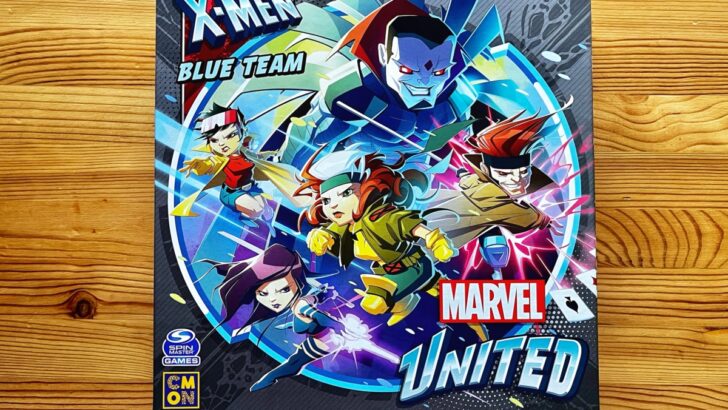This X-Men expansion not only features some of the most popular Heroes outside of the mutants in the core set, but also contains a new Team vs. Team mode of play. Read our Marvel United: X-Men — Blue Team review for more information.
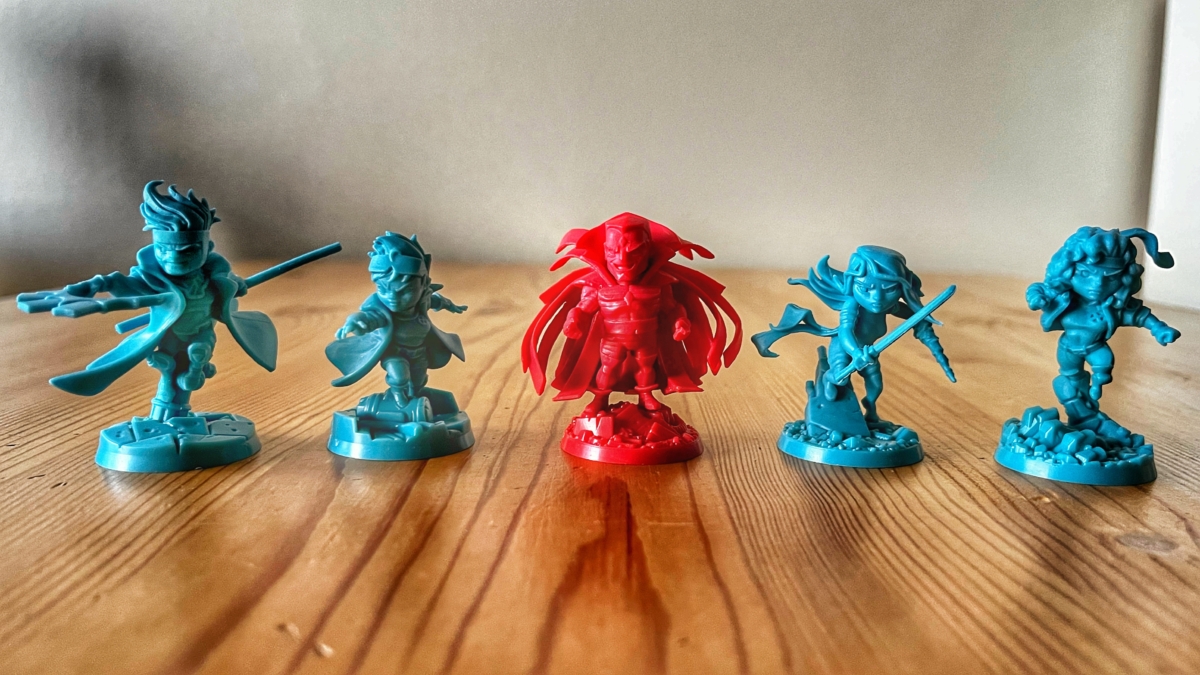
The minis found in the X-Men Blue Team expansion.
Contents
Marvel United: X-Men — Blue Team Overview
The X-Men Blue Team expansion includes 4 iconic Heroes, 1 sinister Villain, new Locations, and all the components needed to play the new Team vs. Team mode. Since this is an expansion, you’ll need a core set (Marvel United or Marvel United: X-Men) to play.
If you’re new to the game, you’ll want to read our Marvel United review to learn its basic rules.
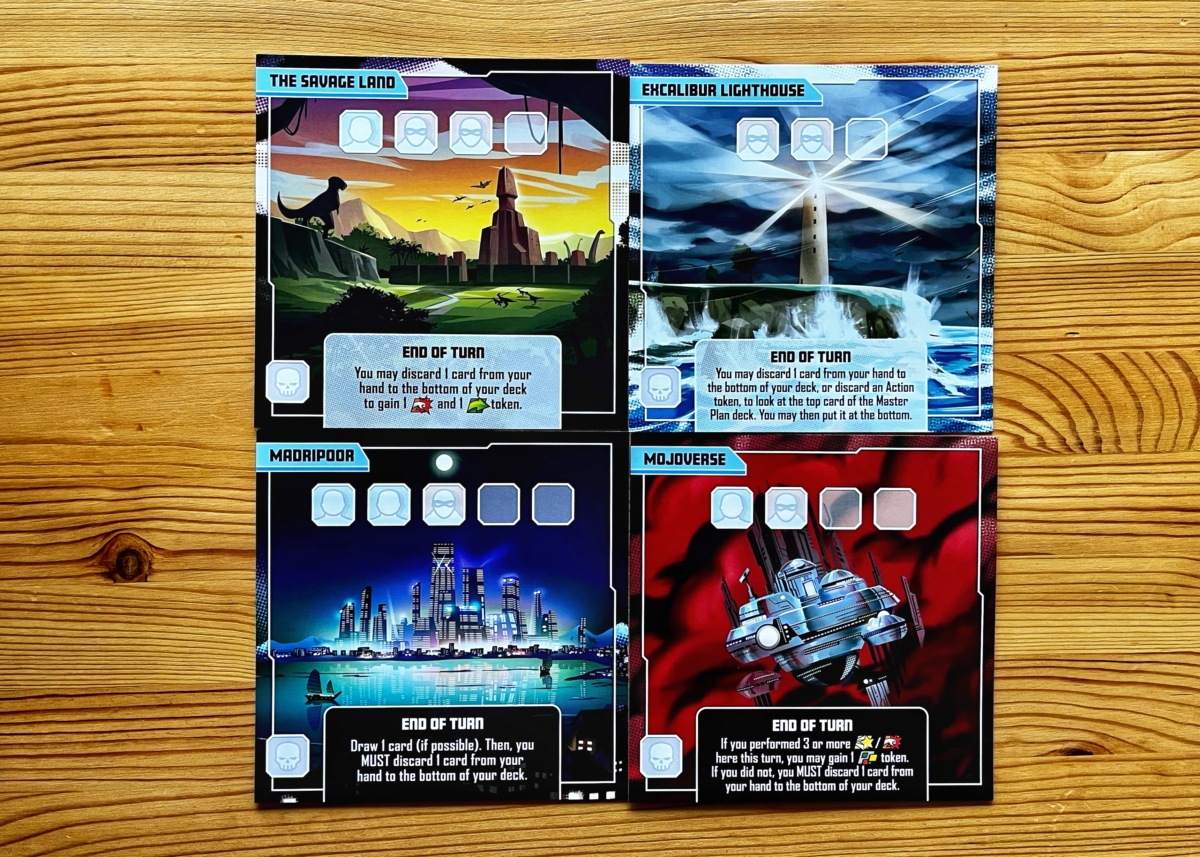
The new Locations in the Blue Team expansion. The “End of Turn” effects in black on Madripoor and Mojoverse indicate it must be performed.
Everything in this expansion can be used in isolation or combined with other Marvel United components for an unforgettable battle.
Blue Team Heroes
Rogue
The self-described “Southern belle” of the X-Men is all about absorbing other Heroes’ powers — but only after they’ve had a chance to use them.
With her 4 “Power Absorption” ability cards, she can use the special effect on another Hero’s faceup card in the Storyline.
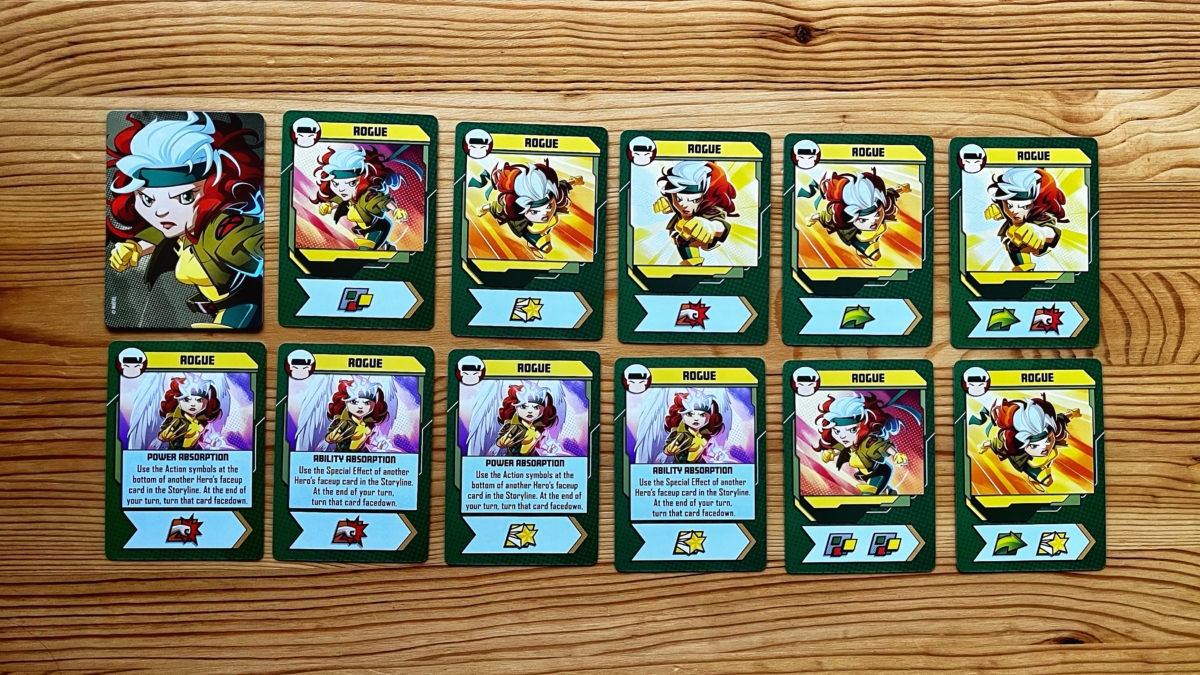
Here is Rogue’s deck of Hero cards.
Rogue is strong in both Heroic and Attack actions, even if many of her cards only feature 1 of these icons. Unfortunately, she lacks movement opportunities for herself and her fellow teammates.
Psylocke
If you’re looking for a strong attacking force in your games, then Psylocke is your Hero. She possesses great strength, movement, and double icon cards — even though her Heroic icons are lacking.
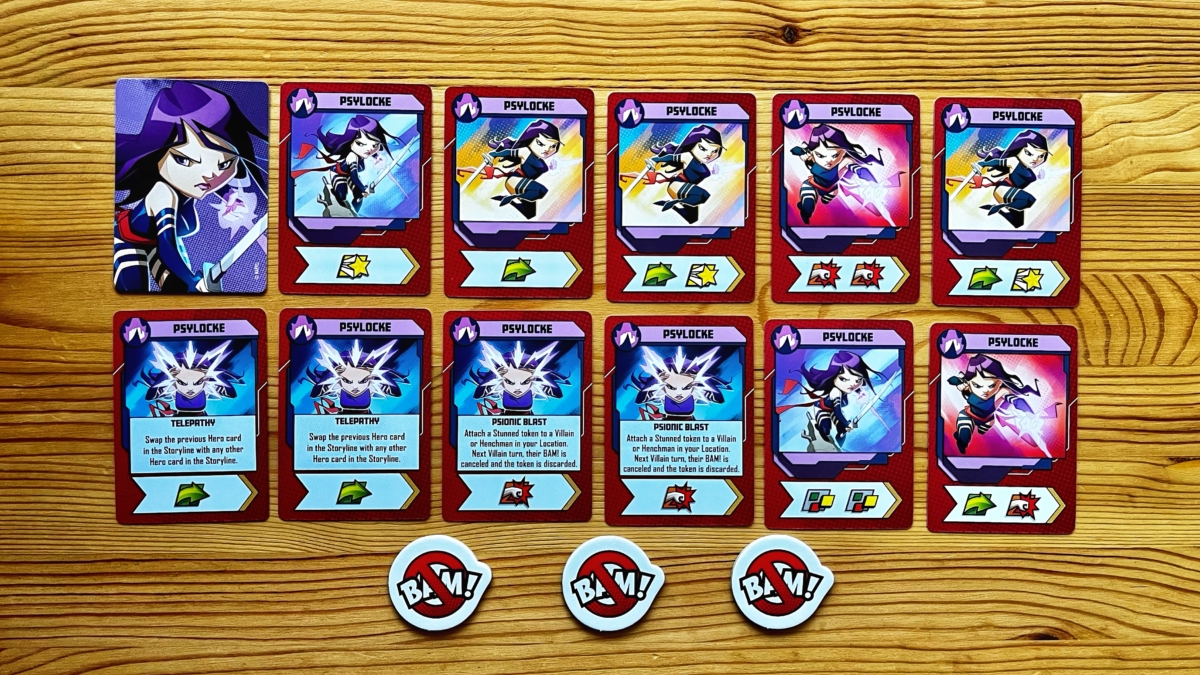
Psylocke’s Hero cards and her Stunned tokens included in this expansion.
Her special ability cards also help get Heroes out of a bind: “Psionic Blast” stuns a Villain or Henchman and “Telepathy” lets her swap the previous Hero card with any other in the Storyline.
Jubilee
The appearance of Jubilee in Marvel United is certainly a cause for celebration, not only because she’s a beloved member of the X-Men team but also for her Heroics.
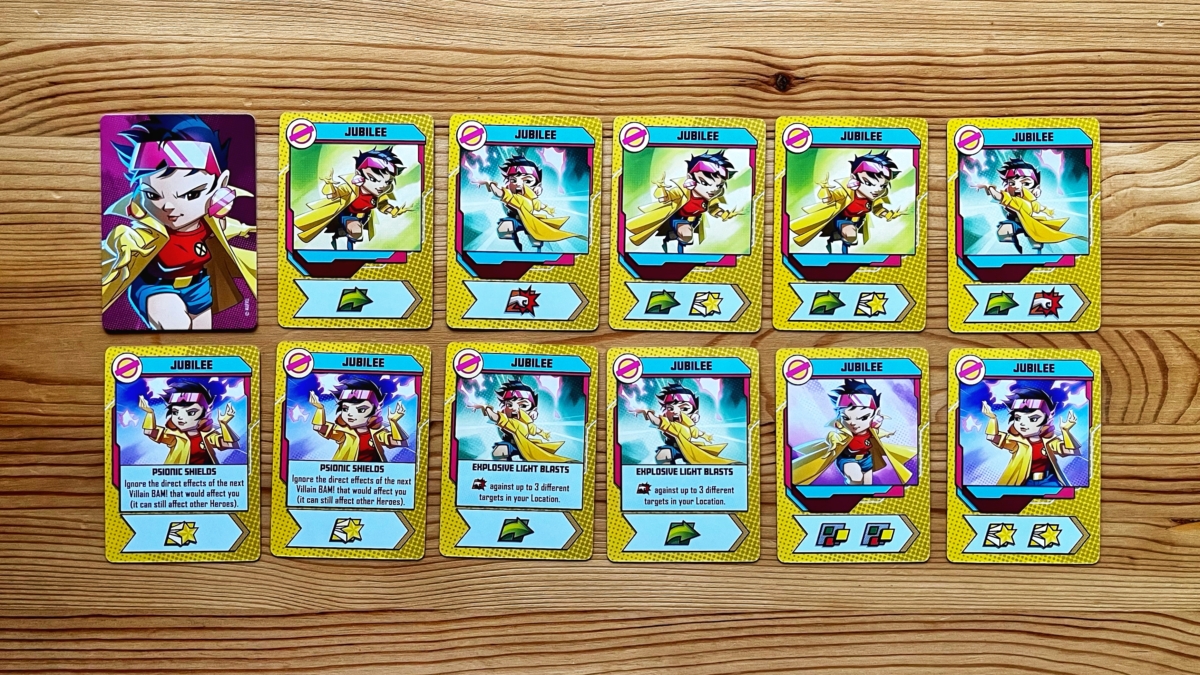
These are Jubilee’s Hero cards.
Like Psylocke, Jubilee’s Hero deck has excellent movement and a number of double icons. The two differ, however, in their Attacks and Heroics, with Jubilee being more effective in the latter.
Jubilee isn’t without attacking power; her “Explosive Light Blasts” card damages up to 3 different targets.
Gambit
Gambit’s speed comes through most in his Hero cards. That’s not to say he doesn’t have a wealth of other action icons; he’s the Hero out of the 4 with the fewest single action icon cards.
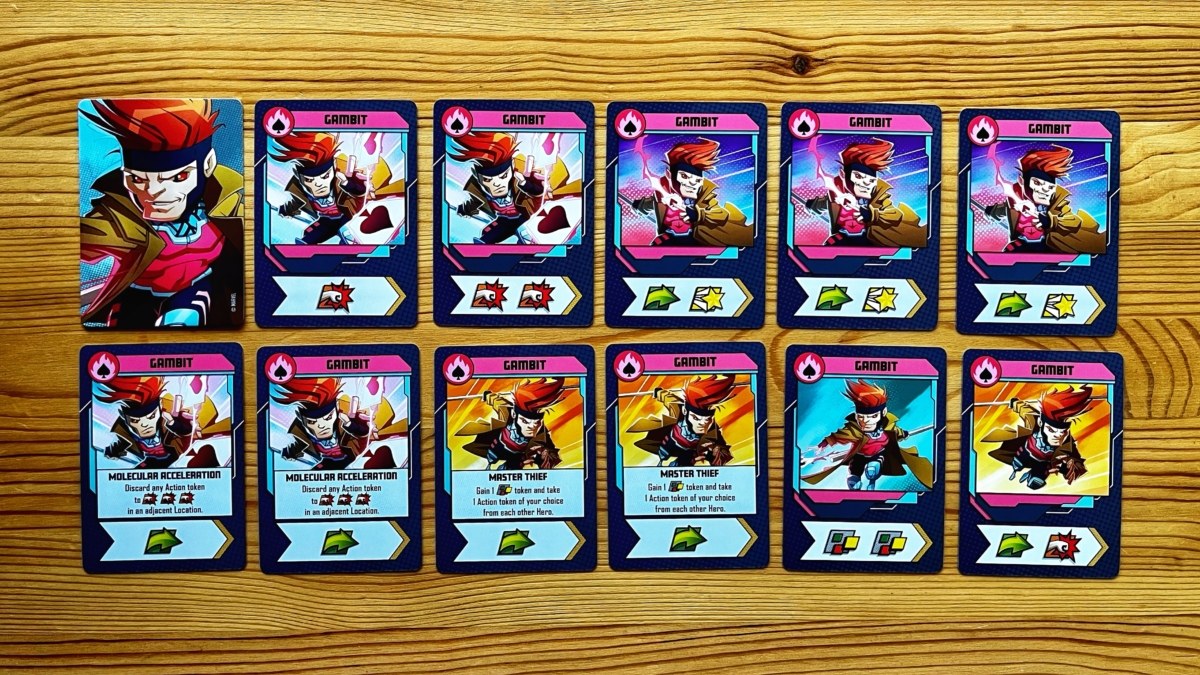
Gambit’s deck of 12 Hero cards.
His thieving — and sometimes selfish — nature is replicated in his 2 “Master Thief” special ability cards that allow him to gain a Wild token and a token of his choice from every Hero.
His “Molecular Acceleration” cards aren’t quite as riveting as card-throwing, but they do allow him to weaponize an Action token to deal 3 Attacks in an adjacent Location.
Villain — Mister Sinister
Even in Marvel United, Mister Sinister will always be the scientist hunting down mutants for their DNA.
During setup, 12 DNA Sample tokens are distributed evenly among the Heroes. During the game, Mister Sinister won’t deal damage to the Heroes; he’ll just steal these tokens.
Any Hero without DNA Sample tokens must ignore the special effects on their cards as if they were blank.
If Mister Sinister collects 9 tokens, the Heroes lose.
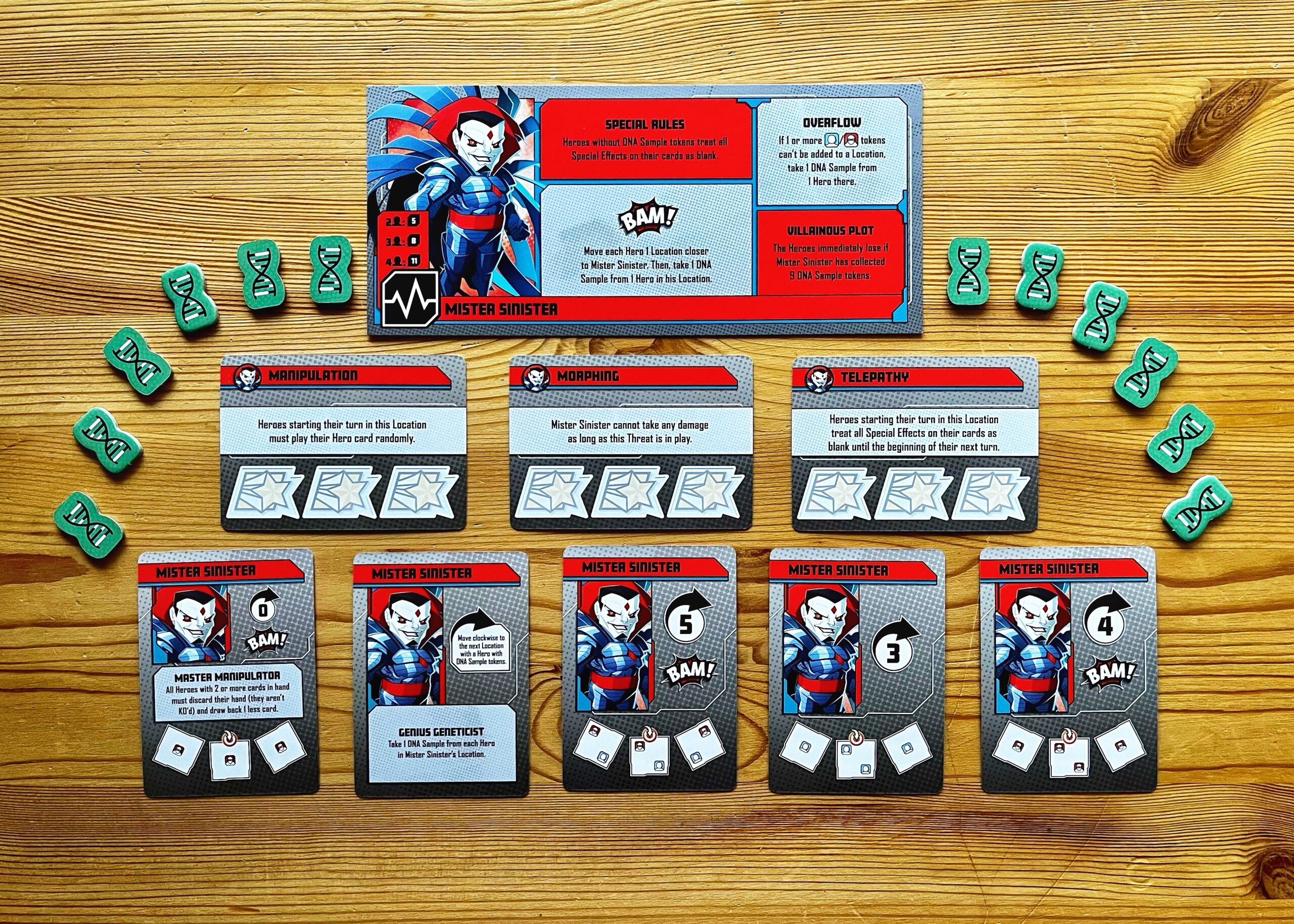
Mister Sinister’s Villain Dashboard, Master Plan cards, Threat cards, and DNA Sample tokens that are part of the Blue Team expansion.
Mister Sinister’s other key characteristics are represented in his Threat and Master Plan cards.
His powers of manipulation appear on both types of cards. His “Master Manipulator” makes Heroes discard cards and draw back 1 less, while his “Manipulation” Threat card makes Heroes play their card randomly.
His ability to morph and transfer his mind into clones is represented by his “Morphing” Threat cards that protect him from damage as long asthey’re in play.
Team vs. Team
The new Team vs. Team mode allows players to split up into two teams of Heroes (2 vs. 2 or 3 vs. 3). Each team fights against the same Villain and competes to see who deals the most damage to them.
This mode of play is not specific to the Blue Team Heroes and Villian; if you have this expansion and its components, you can introduce Team vs. Team to any Marvel United game.
Overview
The goal for each team of Heroes in this mode is to deal the most damage to the Villain. Like in a standard game, your team must complete 2 missions, but these are a little different than the original ones.
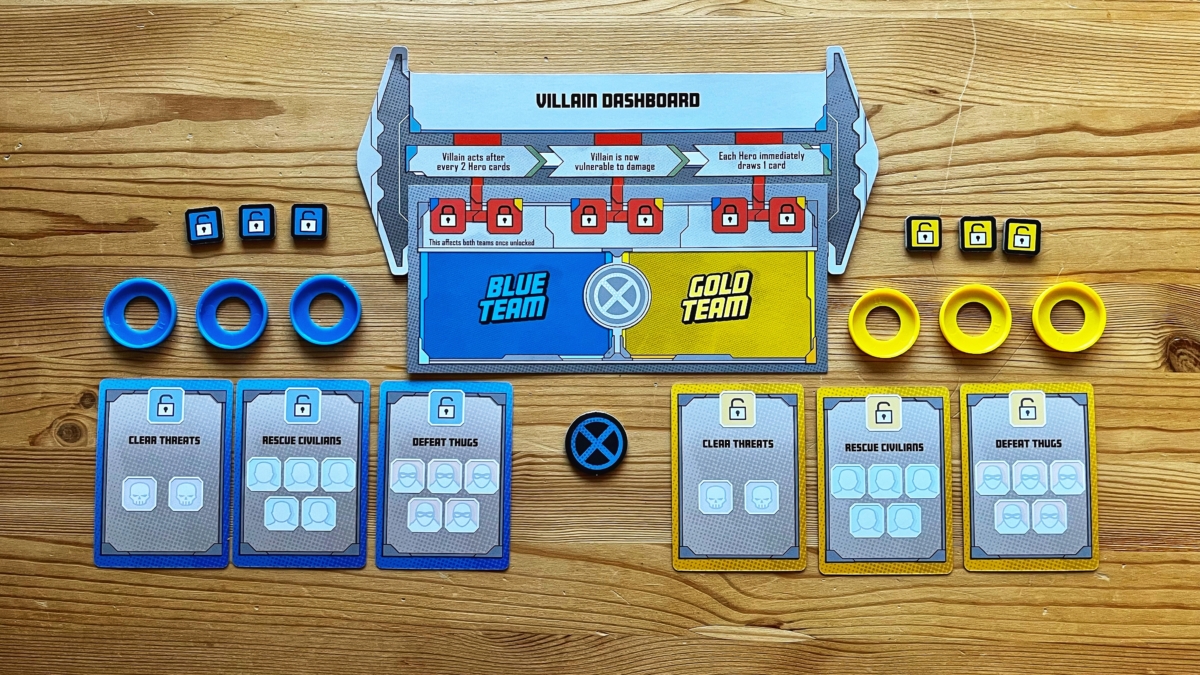
The setup is a little different when playing Team vs. Team, notably the different Mission cards, the Damage Dashboard, the Initiative token, and the colored bases for each Hero.
When only one team completes their first mission, the Villain is under pressure as usual.
When a team completes their second mission, only they are allowed to begin to deal damage to the Villain; the other team must complete their own 2 missions before getting this opportunity.
Villain Turn
The first step of the Villain’s turn is to flip the Initiative token to its opposite side to change which team plays first on the Hero turn.
The Villain plays their Master Plan card and resolves its effects as usual, but what changes is the frequency with which they play.
The Villain will play after both teams have played the same number of Hero turns. Initially, this is 3 turns, but it is 2 after any team has completed a mission.
Hero Turn
After the Villain plays, a Hero from the team whose color is shown on the Initiative token takes a turn by playing a card to their team’s Storyline.
Then it’s a Hero on the other team’s turn. Play continues to alternate like this between the two teams.
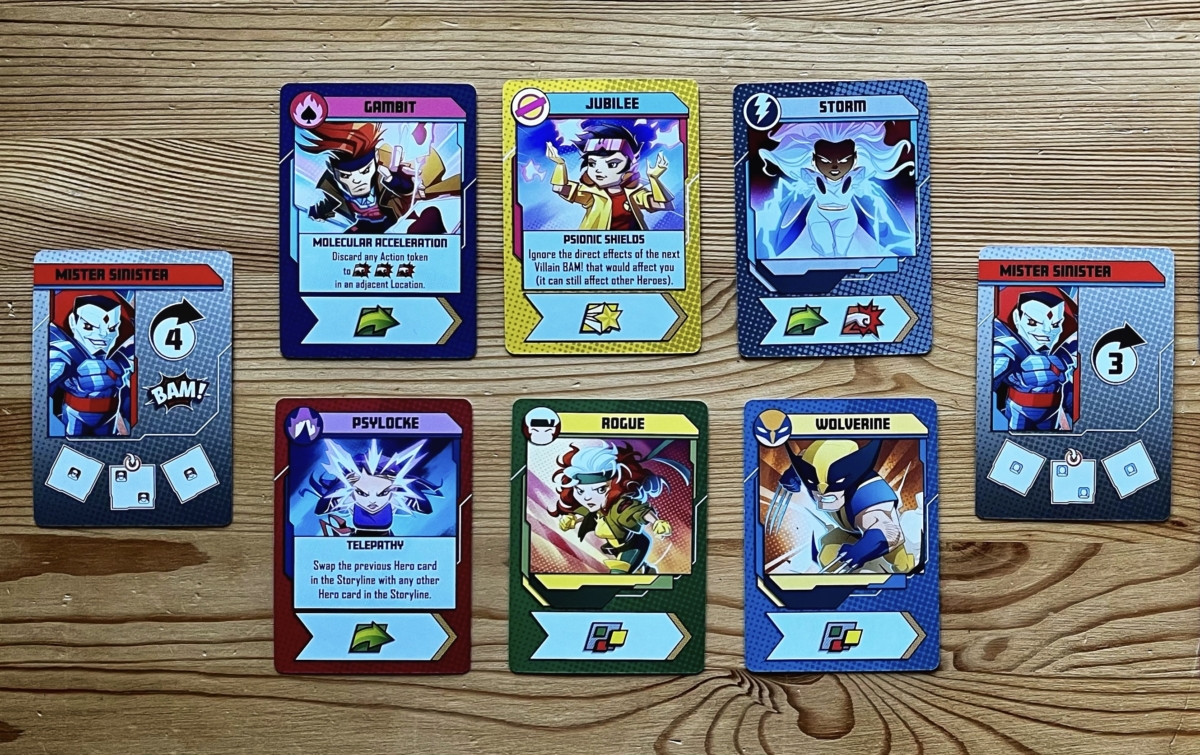
This is what the Storyline might look like in Team vs. Team mode, with the blue team’s Hero cards on top and gold on the bottom.
Since each team plays to their own Storyline, a Hero resolves the icons shown on the previous Hero card for their team only.
Actions are resolved in much the same way as the standard game, except that you can attack the opposing team’s Heroes, causing them to discard 1 card per damage (but you can’t “KO” them).
Winning and Losing
A team wins if, when the Villain is defeated, they have dealt the most damage to them throughout the game. (If there is a tie, it’s the team that dealt the final blow.)
Players lose if the Villain achieves their plans according to the standard game’s rules.
Marvel United: X-Men — Blue Team Review
I won’t bury the lead: Marvel United: X-Men — Blue Team is my favorite X-Men expansion (and tied for my favorite with Return of the Sinister Six ).
Heroes
All the Blue Team Heroes are solid.
Psylocke and Jubilee are easily above average; when the two are together on a team, they balance out the weak points in each other’s decks well.
As the Hero with the fewest single icons, Gambit can be powerful, but he’s at his best when he’s paired with a Hero that gives players tokens (of which there are none in this expansion).
Rogue is the weakest of the bunch, having the most single icons and no game-changing abilities, but she’s still average.
Mister Sinister
I always have a great time playing against Mister Sinister.
What I appreciate most about him is how his play style shifts the gameplay focus; he isn’t about simply beating up on players like many other Villains. Instead, he only cares about the DNA tokens. That shift is fun to play out.
Team vs. Team
If you’ve read my other reviews, you’ll know I’m happy with the standard way Marvel United plays.
Often, the different challenges and modes of play are not enough for me to move away from this. Team vs. Team is no exception — and I’m not keen to change from the Villain versus Heroes gameplay to Heroes against Heroes.
Final Thoughts
Marvel United: X-Men — Blue Team is a fantastic expansion. It includes several excellent Heroes to play, a Villain with an interesting play style, and all the components you need to play the Team vs. Team mode in any Marvel United game.
You might also be interested in the following:
- Marvel United Review
- Marvel United: Rise of the Black Panther Review
- Marvel United: Deadpool Review
- Marvel United: Enter the Spider-Verse Review
- Marvel United: X-Men — X-Force Review
- Marvel United: X-Men — First Class Review
- Marvel United: X-Men Review
- Marvel United: Return of the Sinister Six Review
- Marvel United: Tales of Asgard Review

